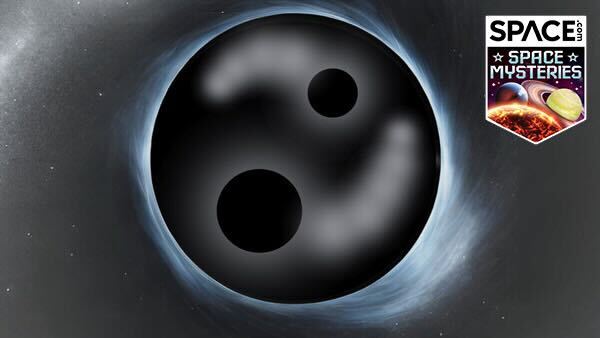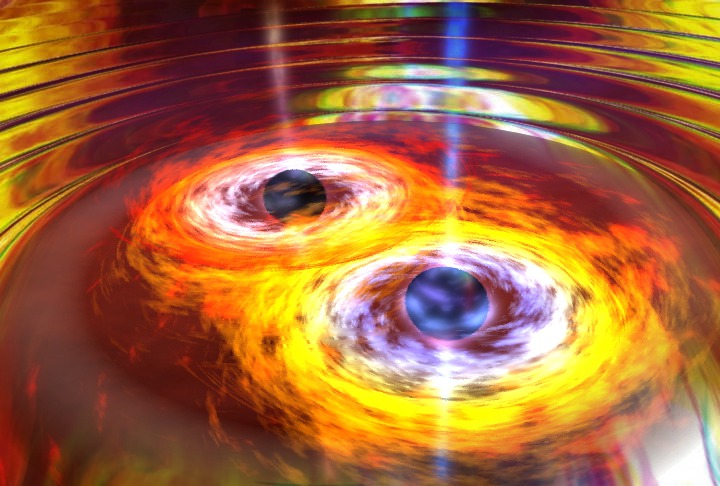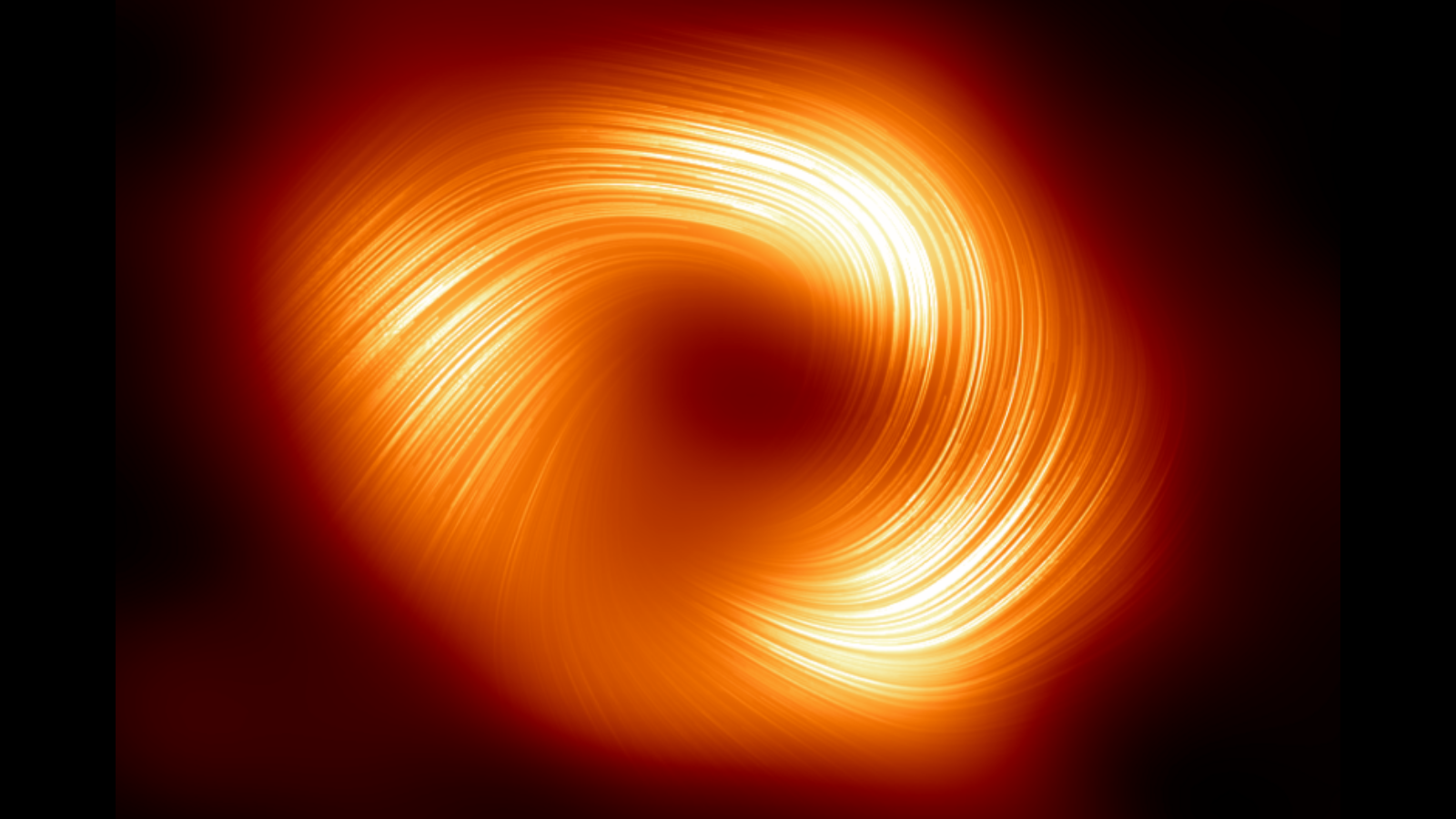Do black holes hide the secrets of their ancestors?
"How can we do the detective work to go back in the past and see what actually went down in the environment of merging black holes?"

Black holes are monstrous and monolithic regions of space and time that have captured humanity's imagination. Some are created by the death and collapse of a massive star — yet no single star can birth the most tremendously large black holes. Those are the supermassive black holes that lurk at the hearts of galaxies with masses equivalent to millions, or even billions, of suns.
Giant black holes such as these are believed to have been created when two smaller black holes collided and merged once upon a time. And now, scientists wonder whether we can learn about the family tree of a black hole by working backward through the generations.
Related: How do some black holes get so big? The James Webb Space Telescope may have an answer
If there is a cosmological object or event designed to be mysterious, it is the black hole. This region of space is marked by a boundary called the event horizon, the barrier between our universe and whatever lies within the void itself. Thus, it is impossible to get a signal and, thus, information from beyond this barrier.
In addition to this, black holes have very few identifying characteristics, something theoretical physicist John Wheeler once described by saying, "black holes have no hair." That means, unlike looking at a child's hair color or complexion and making a rough guess about the hair color and completion of their parents, "hairless" supermassive black holes seem to give away no hints at their lineage — or do they?
Not all black holes are created the same way
Imre Bartos is a physicist at the University of Florida who theorizes that the limited characteristics of supermassive black holes — mass, spin and electric charge — could actually hide details of the original black hole assembly line that created them.
The standard picture of black hole birth that involves the death and collapse of massive stars, he says, can't account for the creation of the enormous black holes we see today. That includes both supermassive black holes as well as relatively smaller, intermediate-mass black holes with masses around 100 to 100,000 times the mass of the sun.
Get the Space.com Newsletter
Breaking space news, the latest updates on rocket launches, skywatching events and more!
"Stars have sort of a limit of how big they can grow without basically falling apart by themselves. If a star gets very, very big, then it will explode before it has time to create this dense core that can form the seed for the black hole," Bartos told Space.com. "We expect a natural limit for how heavy black holes can be when they form from the death of stars. This mass is something like 50 times the mass of our sun. So, it's a pretty large mass, but nowhere as large as a mass we see for supermassive or intermediate black holes."
This means there has to be some other process creating the most monstrous black holes, and observations of tiny ripples in spacetime called gravitational waves suggest such a process could be subsequent collisions and mergers of progresively larger generations of black holes.
"How can we do the detective work to go back in the past and see what actually went down in the environment of merging black holes? Can we say anything about the black hole ancestors?" Bartos wondered.

Bartos thinks that understanding what causes black holes to draw together and merge is key to understanding how the universe evolved — and could even to get to the bottom of the laws of fundamental physics.
"We want to learn, and so far, we haven't fully understood what in the universe actually makes the black holes come together and merge," Bartos said. "This cannot be just a random process. There has to be some mechanism that brings the black holes together and makes them merge. And this is what we try to understand from the limited properties that we have available."
He added that, by looking at the mass of a supermassive black hole and gravitational waves from the merger that created it, researchers could estimate the masses of the black holes that must have come together to create it in the first place. More than this, Bartos and colleagues theorize that observing how fast the black hole is rotating can reveal also how fast the parent black holes that created it were spinning.
Looking at electromagnetic signals from the region in which these mergers occurred could, according to Bartos, show how they were interacting with their environments as well. For instance, were the black holes feeding on gas and dust from their surroundings to facilitate their own growth?
Black holes have grandparents, too
Bartos added that black holes with masses greater than 50 times that of the sun might be found in regions with many other black holes. This means that, just as we have parents, grandparents and great-grandparents, black hole mergers likely aren't unique events, and the most massive black holes come from repeated generations of mergers.
This generational situation wouldn't just result in a gathering of mass, but subsequent daughter black holes would also gather angular momentum from their ancestors. Bartos said this means that, as black holes get bigger and bigger, they should also spin faster and faster.
"If we detect higher spin, that can be an indication that there might have been previous mergers," Bartos said. "It turns out that for some of the heavier black holes we've seen so far, we do see that there is an indication of the high spin that we would anticipate from these consecutive mergers."
While Bartos thinks the idea of black holes having "grandparents" is fascinating, however, and believes we can unveil some details of black hole parents from gravitational wave observations, the story of black hole grandparents may be lost to time.
"There is no way that we can detect the previous mergers just directly from gravitational wave observations. We would have to operate detectors for millions of years, which is unlikely," he said.

The chain of mergers that would create a supermassive black hole is believed to take at least 1 billion years, but these cosmic titans have been observed in the universe since just a few hundred million years after the Big Bang. Those observations are courtesy of the James Webb Space Telescope (JWST). That leaves a challenge. Scientists still need to fully explain how these cosmic titans grew so big, so quickly. However, maybe the clues lie in the ancestral mechanism itself.
"If we see the processes that merge these black holes, we can see what the starting points for supermassive black holes in galactic centers are," Bartos said. "We can see how fast the process is, how prevalent it is, and that can help us understand how big a role this may play in the process of forming the heavier black holes."
Bartos expects that, as gravitational wave detectors become more sensitive, humanity will spot these ripples in space and time from more distant, and thus early, black hole mergers. This means we should continue to learn more and more about how black hole growth has proceeded over the 13.8 billion-year history of the cosmos.
"I'm very excited about seeing things for the first time and discovering things going to the extremes of our knowledge," Bartos concluded. "When we look at the extremes, things are very different from what we're used to. And black holes are extreme in many ways."
Join our Space Forums to keep talking space on the latest missions, night sky and more! And if you have a news tip, correction or comment, let us know at: community@space.com.

Robert Lea is a science journalist in the U.K. whose articles have been published in Physics World, New Scientist, Astronomy Magazine, All About Space, Newsweek and ZME Science. He also writes about science communication for Elsevier and the European Journal of Physics. Rob holds a bachelor of science degree in physics and astronomy from the U.K.’s Open University. Follow him on Twitter @sciencef1rst.
-
mdswartz The universe is composed of matter, the forces of nature, and open spaces. Matter wields gravity and all the forces to accomplish it's objectives, which are to make regular matter sections of the universe, harness them back in and recycle them via transition from regular matter to neutron star, then neutron star to primordial matter of bottled up quarks and nuclear forces squeezed to the center of a black hole, then primordial matter back to regular matter via a pulverizing big bang explosion from a single hot dark dense state into open spaces of the universe. Gravity only does what matter indicates: add matter, you add gravity, take away matter you reduce gravity. But matter does everything else, it wields nuclear forces to transition between primary states and to form regular matter sections of the universe, and it wields gravity to hold stars firm from the outward pressures of fusion and to accumulate the precious primordial matter in a black hole for later use. In these regards, matter is controlling and operative. We ourselves are made of matter, and matter knows it can make intelligent life out of big bangs, so in that respect matter possesses all human knowledge and all other knowledge, and any subsequent big bang might only add to this knowledge. So yes, black holes are part of the universe's matter, and they're preparing for new universe sections as they accumulate the precious primordial matter for the next big bang, so in that respect they do possess the knowledge of everything the matter accomplished before heading into the black hole for accumulation and redistribution.Reply
